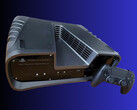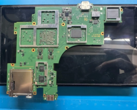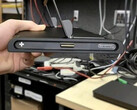Yesterday, we got a good look at the Nintendo Switch 2's motherboard. It showed us some key components, such as an Nvidia SoC and 12 GB of LPDDR5X RAM. The markings on the former indicated it could be an Nvidia Ampere-based chip. Before that, another leaker stated the Switch 2 would be able to run games at 4K 30 FPS when docked. Now, a patent listing (massive thanks to Laura Kate Dale for spotting it), shows us Nintendo plans to use a DLSS-like feature on its next handheld.
The patent, which you can read here in its entirety, talks about upscaling images using a trained neural network. It cites a 540p image being upscaled to 1080p as an example. Incidentally, 540p also happens to be the resolution for DLSS 2.0's 'Performance' mode. It also talks about converting 720p to 4K, which, once again, is an indirect reference to DLSS 2.0's 'Ultra Performance' mode. The above transformations will leverage dedicated hardware like Nvidia's Tensor cores.
By default, the upscaling features will be switched off when the console is on battery and enabled when connected to a power source such as a dock. But, users have the option to enable it manually. That, of course, will affect battery life due to the additional computing involved. There is a possibility it could happen via a dedicated key on the Nintendo Switch 2.
It is important to note companies often file patents for future products that won't see the light of day for years. However, that doesn't seem to be the case here because the Nintendo Switch 2 will need all the help it can get to squeeze every erg of performance out of the ageing Nvidia SoC. Besides, DLSS, FSR, PSSR, XeSS and the likes were designed for this explicit purpose.



































